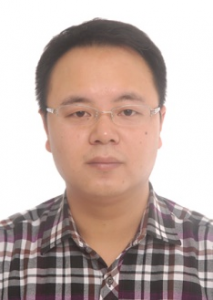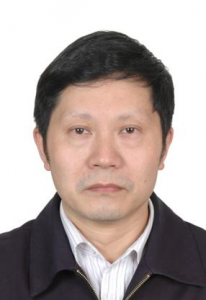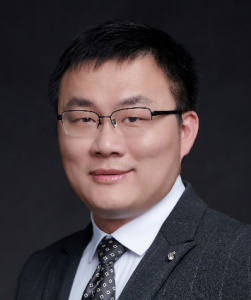Intro:The brain atlas is the cornerstone of brain structure and function. It is the basis for carrying out brain synergy and intelligent evolution. It is a cross-discipline in the field of brain science and computer science, cognition science and artificial intelligence. This symposium is aimed at the brain atlas big data analysis and modeling the international front, surrounding the brain and brain calculate strategic development needs, from the key core technology in the field of the brain (brain atlas, brain-machine interaction, bionic calculation, deep learning, etc.), discuss all areas of the challenges facing technical route and the possible development, development of new dynamic tracking discipline. This symposium will invite four speakers to share their insights and cutting-edge results in brain atlas from theory to applications.
Date&Time:13:30-17:30, December 28, 2021 Location: Meeting Room 2
Organizer: Prof. Tianzai Jiang (Institute of Automation, The Chinese Academy of Sciences) and Prof. Yong Liu (Institute of Automation, The Chinese Academy of Sciences)
Agenda:
13:30-14:00
Graph Signal Processing: its Mathematical Theory and Application
Lihua Yang
14:00-14:30
Reconstruction of brain-wide connectivity network at single neuron resolution
Anan Li
14:30-15:00
Brain Connectivity Atlas and Accurate Neuromodulation
Jiaojian Wang
15:00-15:30
Spatial-temporal brain structure change during the progression of Sporadic Alzheimer’s Disease
Junjie Zhuo
Title: Brain Connectivity Atlas and Accurate Neuromodulation
Abstract: Brain connectivity atlas is fundamental for investigating brain functional organization and identifying biomarkers for brain disorders. Traditionally, brain atlas is created with microscopic cytoarchitecture or macroscopic anatomical landmarks in absence of connectivity information which determines the functional segregation. In this talk, I will introduce a series our works to map the brain connectivity atlas based on distinct connectivity profiles, to explore the relationship between different modalities to create the connectivity atlas, and to investigate the evolutional and developmental connectivity atlas.. Finally, I will present using our brain connectivity atlas to guide neuromodulation (rTMS) for investigation of visuospatial attention and for mild Alzheimer’s disease (AD) therapy.

Jiaojian Wang
Biography: Dr Jiaojian Wang is currently an associate professor in School of Life Science and Technology of University of Electronic Science and Technology of China (UESTC). He received his PhD degree in biomedical engineering from UESTC in 2014 and worked as a lecturer at UESTC from 2015. From 07/2017 to 08/2018, He worked as a post-doctor in University of Pennsylvania and Children’s hospital of Philadelphia. His primary research topic is Brain connectivity atlas, accurate neuromodulation for brain disorders and translational medicine researches. He is also interested in brain network changes after perturbation stimulation (such as TMS, DBS, and ECT). He has more than 70 publications in Cell, Journal of Neuroscience, Cerebral Cortex, NeuroImage, Human Brain Mapping etc and these publications were cited more than 3,000 in Google scholar. He is associate editors in Frontiers in Neuroscience and Frontiers in Human Neuroscience. He is also many journals’ regular reviewer including Science Advance, Molecular Psychiatry, Cerebral Cortex, NeuroImage, Human Brain Mapping, IEEE Transactions on Medical Imaging etc.
Title: Graph Signal Processing: its Mathematical Theory and Application
Abstract: Graph signal processing has been paid enough attention and developed rapidly in recent ten years. Traditional signal is defined in the real axis or high-dimensional Euclidean space. With the rapid increase of Internet data, data cannot always be regarded as classical functions. A useful model is the signals on graphs. To process this kind of signals, we need to extend the classical Fourier transform, wavelet transform to the graph setting. Many problems in classical signal processing, such as time-frequency analysis, function approximation, sampling and reconstruction theory, need to be established. In this talk, we will discuss these problems and introduce some of our recent achievements.

Biography:Lihua Yang is a professor at School of Mathematics, Sun Yat-sen University, China. He received the B.S., M.S. and PhD degrees in mathematics from Hunan Normal University, Beijing Normal University, and Sun Yat-sen University in 1984, 1987, and 1995 respectively. From 1996 to 1998, he worked as a postdoctoral fellow in the Institute of Mathematics, Academia Sinica, China. As a visiting scholar he worked in short terms in Hong Kong Baptist University, CENPARMI at Concordia University, Syracuse University, Michigan State University, and City University of Hong Kong. He was actively involved in several international conferences as a co-chair or organizing committee. In 2017, he won the second prize of science and technology of Guangdong province. His current research interests include signal processing and machine learning, especially the mathematical theory and algorithms in these fields. He has published more than 120 papers, 2 books and 3 translations. He was the supervisor of 20 Ph.D. candidates.
Title: Spatial-temporal brain structure change during the progression of Sporadic Alzheimer’s Disease
Speaker: Junjie Zhuo
Abstract: Identifying dynamic changes in biomarkers and clinical profiles is essential for understanding the progression of Alzheimer’s disease (AD). The relevant studies have primarily relied on patients with autosomal dominant AD; however, relevant studies in sporadic AD are poorly understood. By aligning normal cognition (CN) baseline with a clinical diagnosis of mild cognitive impairment (MCI) or sporadic AD, we studied the progression of AD using a linear mixed model to estimate the clinical and biomarker changes from stable CN to MCI to AD. Based on this research paradigm, we further studied the spatial-temporal brain structure change during the progression of Sporadic Alzheimer’s Disease.

Biography: Junjie Zhuo received Ph D. degree in Biomedical Engineering from University of Electronic Science and Technology of China in 2016. He is currently an associate professor at the School of Biomedical Engineering, Hainan University (HU). Before joining HU, he was a postdoctoral scholar with the Institute of Automation, Chinese Academy of Sciences from 2016 to 2020, and a postdoctoral scholar with the Queensland Brain Institute, Queensland University from 2017 to 2020 (International Postdoctoral Exchange Fellowship Program). His research interests include: medical image processing, neuroimaging analysis, brain atlas, medial temporal lobe, and alzheimer’s disease. He has published 5+ papers in prestigious journals like Journal of Neuroscience, Cerebral Cortex, and Neuroimaging. He has presided the project of National Nature Science Foundation of China (NSFC).
Title: Reconstruction of brain-wide connectivity network at single neuron resolution
Speaker: Anan Li
Abstract: The brain is the most complex and significant organ, but little is known about brain function mechanisms yet. Despite the great efforts made by neuroscientists, our knowledge of the brain is still insufficient at the single neuron level. Micro-Optical Sectioning Tomography (MOST) has been developed to capture the characteristics of neurons across the entire mouse brain to meet this need. The huge amount of data collected during these brain-wide and single-neuron level studies has introduced challenges not seen in other fields. Among them, the key technologies of big data computing, image information extraction, and spatial positioning are particularly focused. This presentation will introduce how to build a complete data processing pipeline to achieve accurate, high-throughput, and automated computing based on MOST/fMOST mouse brain datasets.

Biography: Anan Li received his B.E. degree and Ph.D. degree in biomedical engineering from HUST in 2005 and 2011. Currently, Li is a professor of biomedical engineering at Wuhan National Laboratory for Optoelectronics (WNLO). He is conducting research activities in processing, analysis, and visualization of the TB-sized neural images collected by the Micro-Optical Sectioning Tomography (MOST). He has published more than 100 research papers in journals, such as Science, Nature Methods, Neuron, Neuroinformatics. He has received the following honors in China: second-place prize in State Technological Invention Award, National Excellent 100 Doctoral Dissertation, first-place prize in Hubei Provincial Award for Science and Technology Progress. He received funding from the NSFC for the Excellent Young Scientists Fund in 2021.